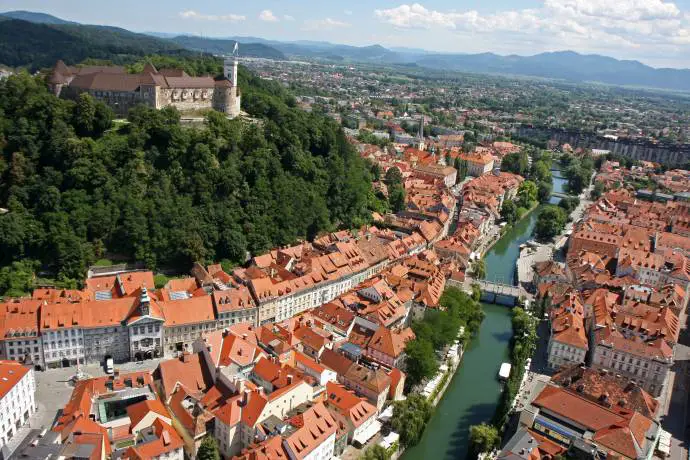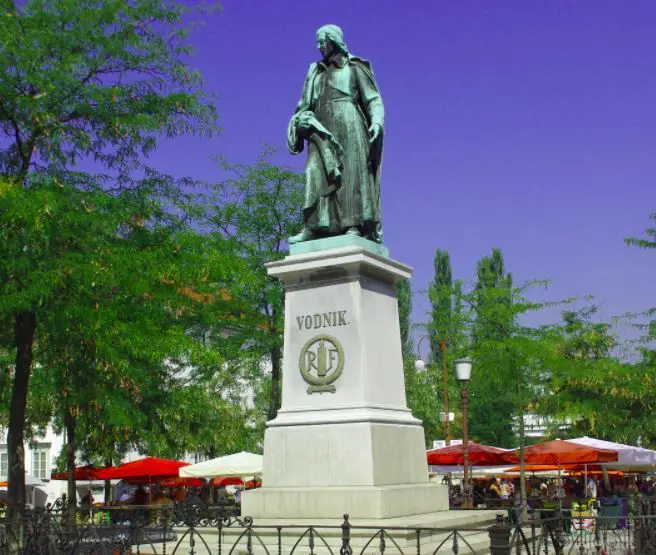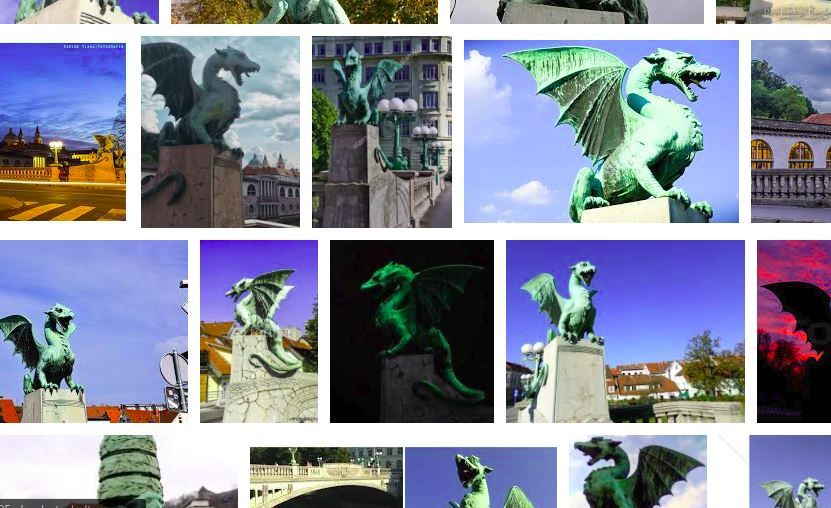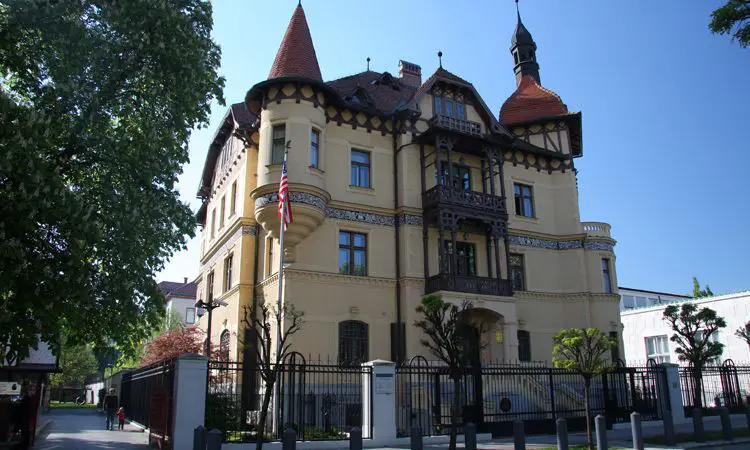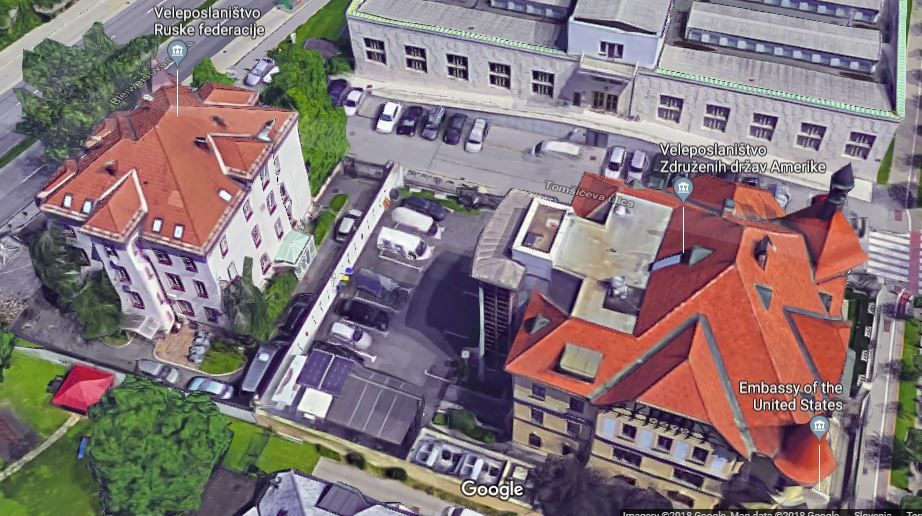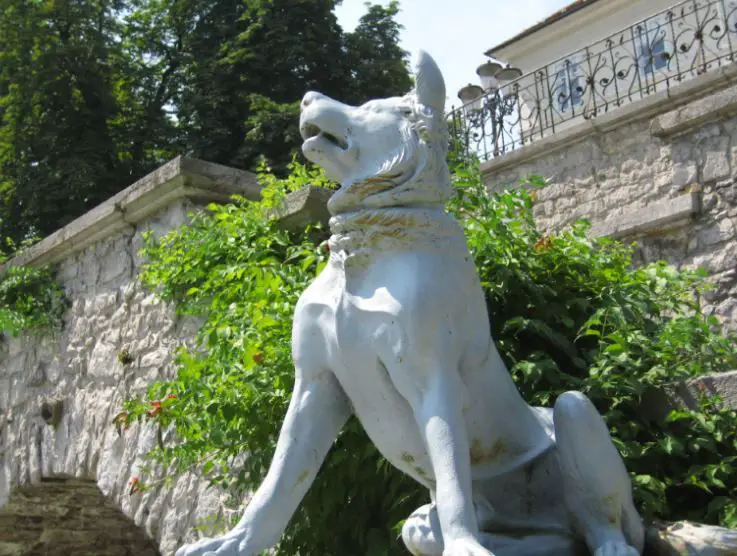January 24, 2018
Central Ljubljana is so small it’s easy to think you can know it all in a day or two, when you’ve chosen a favourite café and learned how to negotiate the odd opening hours of the stores, so short for a capital city. But nowhere as old as Ljubljana, or with such a varied history, with so many empires and invaders passing through, is without it’s oddities and secrets. Although far from exhaustive, here’s a list of some surprising facts about Slovenia’s main city.
1. The city wasn’t always so green
Ljubljana won the title of European Green Capital in 2016, and remains a leading city in terms of environmental good practices, but it wasn’t always so. In fact, it was only in 1625 that a law was passed ordering people to take their waste out of the city at least twice a week, while it was not until 1784 that another law was passed ordering all swine to be kept in pigsties. Despite this, the first public baths were introduced in 1260.
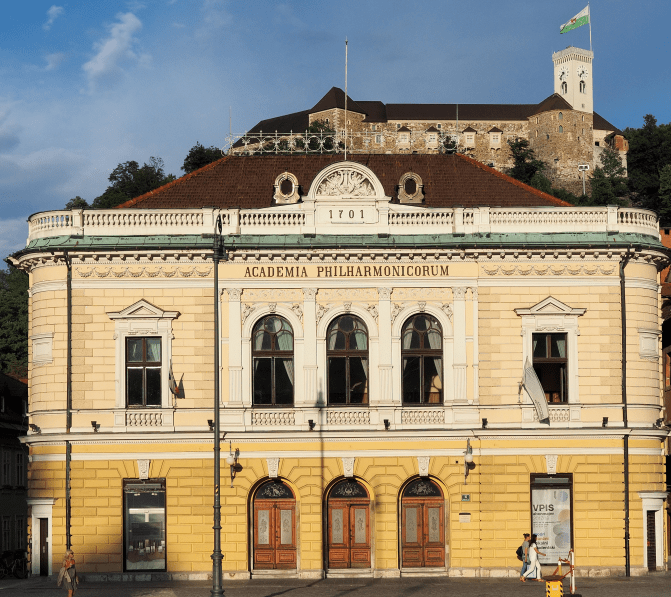
Wikimedia
2. Not all the city is as old as it seems
The Philharmonia building in Kongresni trg (aka Zvezda Park) has a prominent 1701 on the front, but this is not the year when this structure was built, only when Music Academy was established, in the baroque era. The building itself was put up in 1891, and is just one of the many performance spaces in a city known for its musicians. One sign of the esteem in which the Philharmonia has long been held is the fact that its archive has a copy of Beethoven’s 6th Symphony, written in 1808 and sent by the composer, including his own annotations.
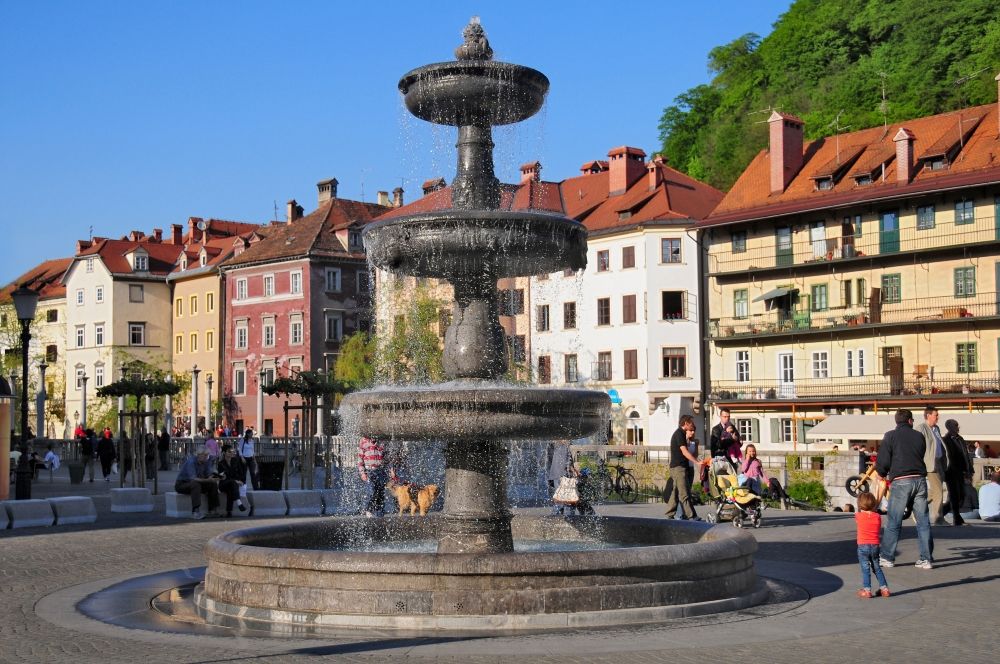
Novi trg fountain. Photo: D Wedam, Visit Ljubljana
3. But some of it is much older
Novi trg, or New Square, is only relatively new, as it was already well settled in Medieval times, and is only young compared to Stari trg, or Old Square, in the Old Town, which is actually more like a street connecting the Mestni trg and Gornji trg. The lovely fountain at the bottom of the square is more recent, however, from the 17th century. This was once part of larger structure, the lower part of which sits in Krekov trg, in front of the Puppet Theatre, now enlivened with the addition of a sculpture of Sapramiška, a mouse from a classic children’s tale.
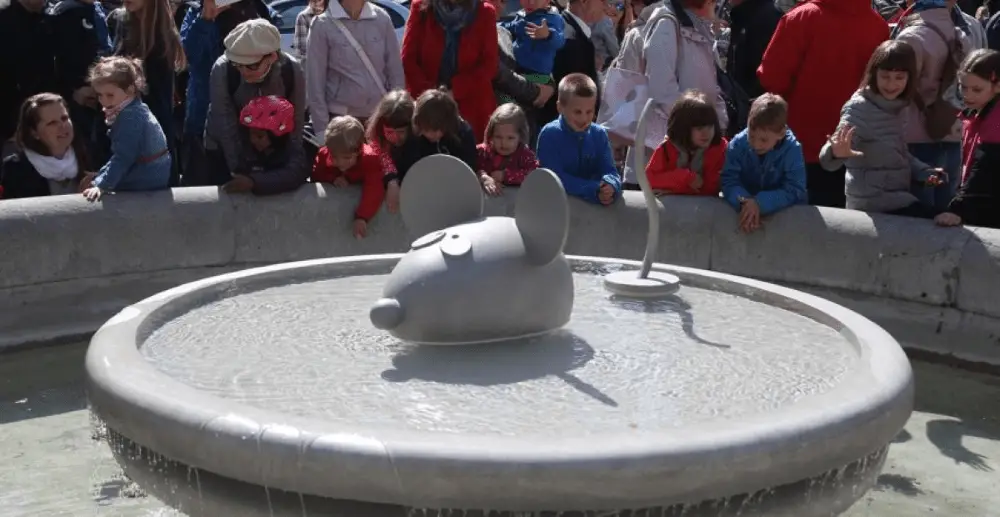
Photo: ljubljana.si
3. It’s not always been full of students
These days in Ljubljana you’re probably never more than 10 meters away from a student in term time. Even part of Križanke is given over to a school, while a dormitory for medical students sits above Zvezda Café.
However, compulsory education for children aged 6–12 wasn’t established until 1774, and the first secondary school not opened until 1851, with compulsory eight-year education finally arriving in 1958. Moreover, the University, which now seems to dominate the city, was only founded in 1919, with just 942 students in the first year, only 28 of whom were female. By contrast, in 2016 it had 40,110 students, including 2,345 from outside Slovenia. You can learn more about this history of education here at the Slovenian School Museum, itself founded in 1898.
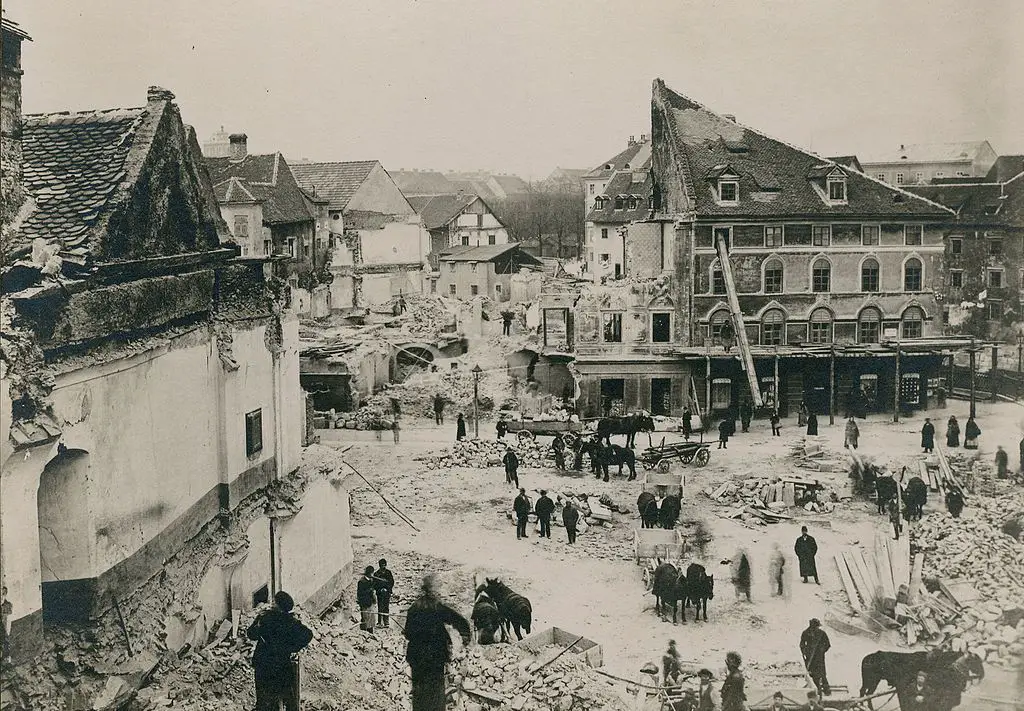
Wikimedia
4. Sometimes the earth moves
While known for its peace and quiet, if you feel a little wobbly in town then it might be the ground and not your legs, as earthquakes are not unknown, Indeed, the last big one that hit, in 1895, brought down many buildings and changed the face of the city.
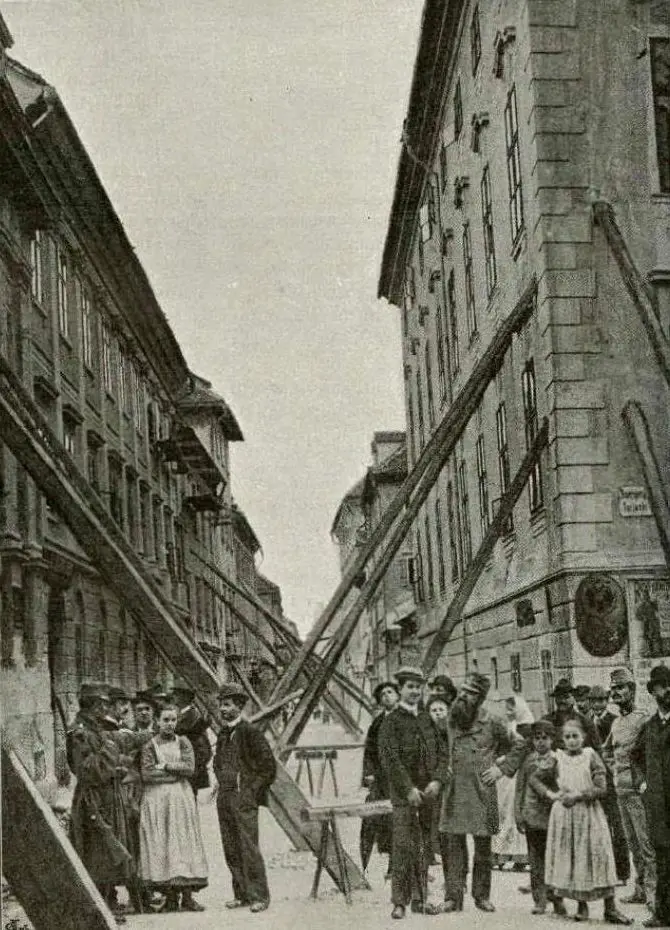
Wikimedia
One piece of trivia related to this is about the Lyceum that was once where the market now stands.
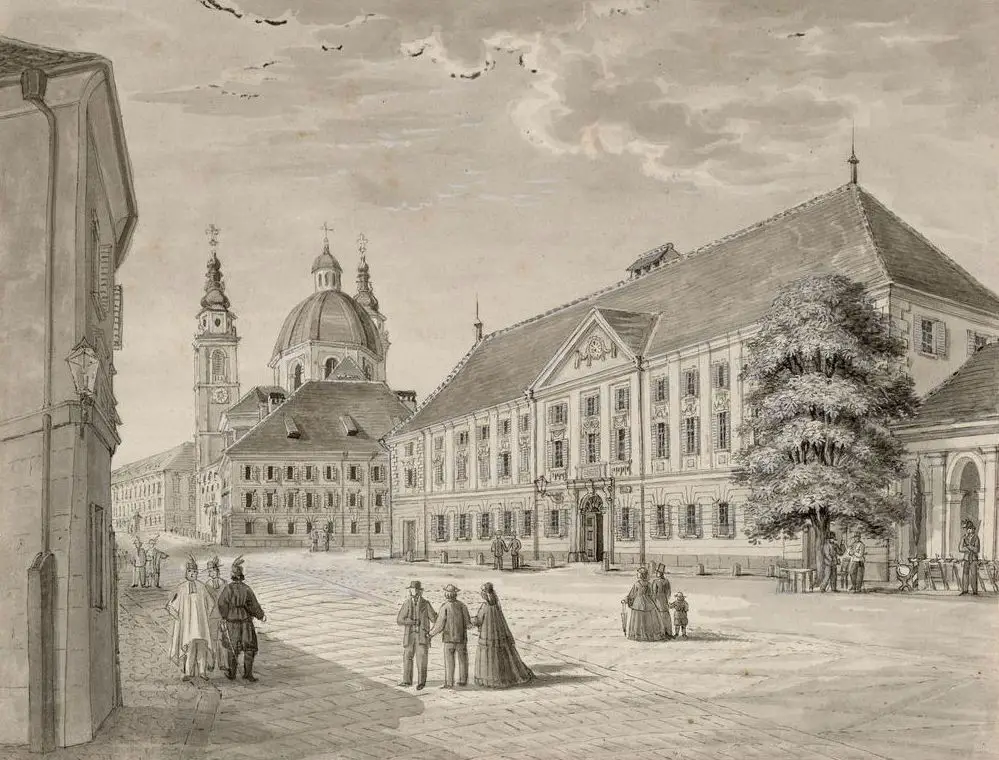
The Lyceum, around 1850, with the Cathedral in the background
The first headmaster of this institution was Valentin Vodnik, whose statue, erected in 1929, is all that seems to remain of the school that collapsed due the tremors.
Wikimedia
Mr Vodnik also lives on in the name of the restaurant nearby his statue – Vodnikov hram. Here’s a video of a happy man eating food there.
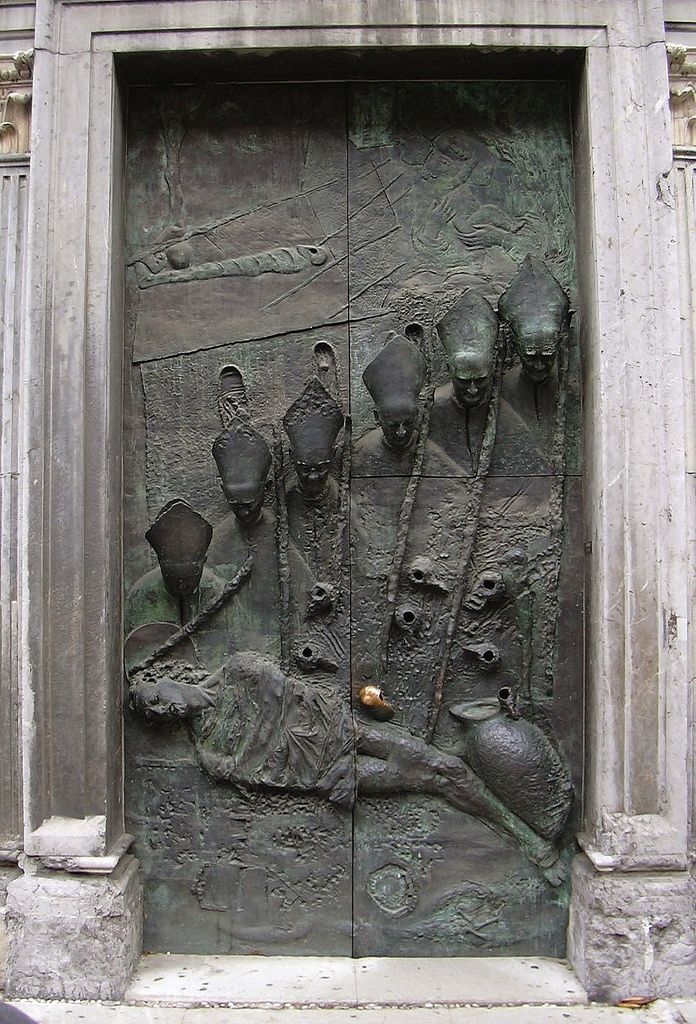
One of the Cathedral doors. Photo: Flickr - Guerretto CC by 2.0
5. Pope John Paul II left his mark
The impressive main and side doors of the Church of St Nicholas, aka Ljubljana Cathedral, were installed in 1996 and mark the visit of Pope John Paul II. There’s also a street in his honour (Ulica Janeza Pavla II) with a rather nice church, that of St. Joseph (Cerkev sv. Jožefa), although this building predates his visit by some 83 years.
6. The Castle wasn't only for nobles
In 1905 the city purchased the property, with the aim of putting a museum there. However, the plans languished, and instead poor families were housed in the building until 1963, when renovation work began. Today, in addition to all the Castle-themed activities, it hosts regular concerts and outdoor movies in the summer, while the other end of the hill is popular with walkers and runners
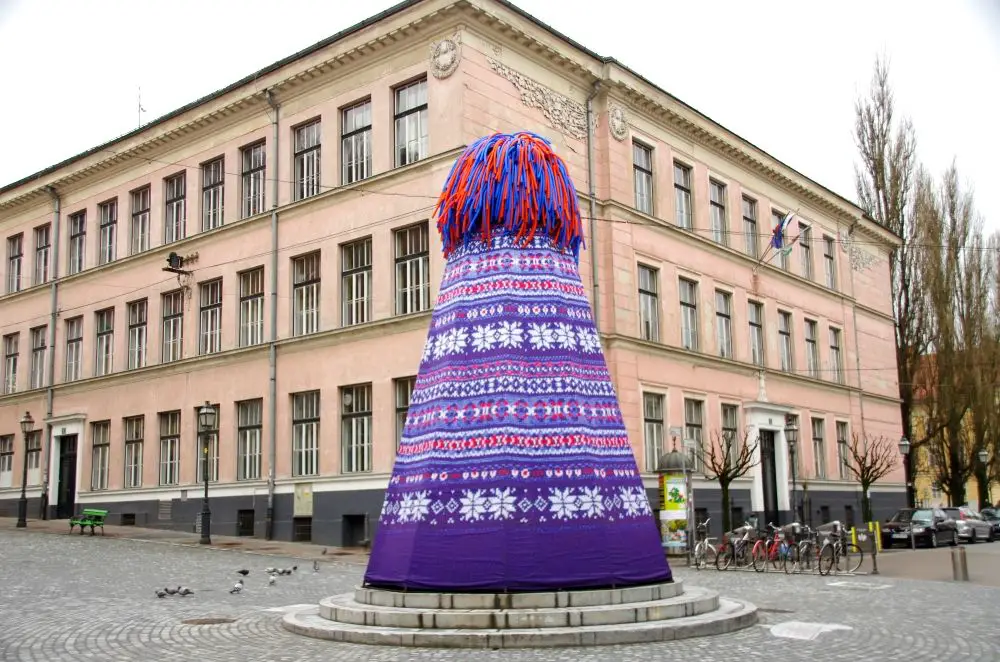
Photo: Flickr – Donald Judge, (CC BY 2.0)
7. The fountains disappear in winter
One of the delights of central Ljubljana is the many fountains that add to the watery appeal of the city. However, visitors in winter will be disappointed in this regard, as most will be covered with a protective wrapping to stop damage from the weather. One exception is the famed Robba Fountain, but the city can afford to be a little more careless here, as the one outside City Hall is a replica. The real one is now kept inside the Slovene National Gallery.
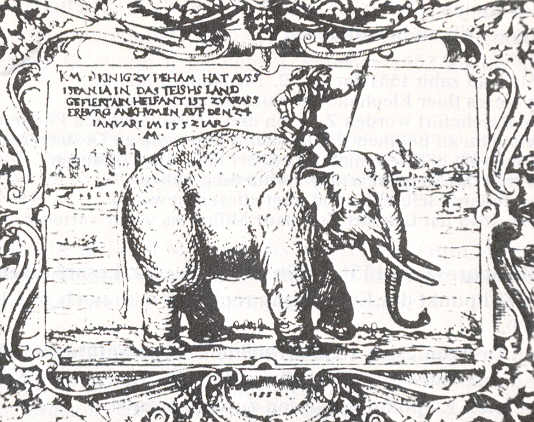
The animal in question. Wikimedia
8. The first elephant in town is not forgotten
The Hotel Slon on Slovenska cesta is so named because the first elephant seen in the city was shown off at this site in 1552, although the hotel didn’t open until several hundred years later. The elephant, called Suleiman, was a wedding gift to Maximillian II, the Archduke of Austria. While living an honoured life and then being stuffed and put on display for a few centuries, the animal’s story eventually came to an odd end – being sold after WWII for use as shoe leather.
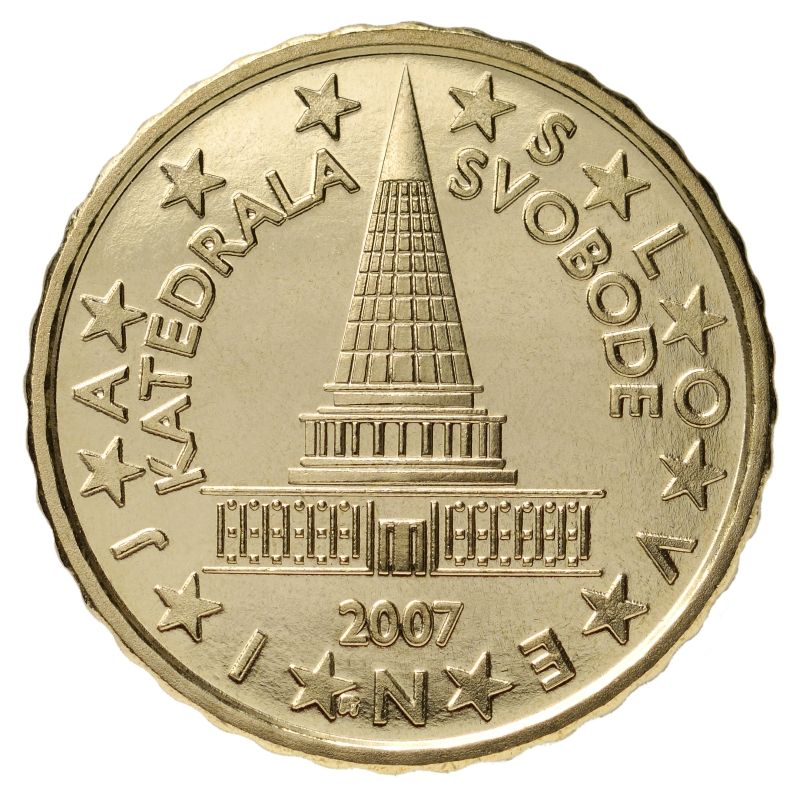
9. Plečnik is probably in your pocket
Plečnik marked the plasterwork of Križanke with the sentence: Minljiv si, le tvoja dela so tvoj spomin (You are ephemeral, only your work will be remembered). To date, however, this remains untrue, and the architect himself remains a focus of much activity and remembrance. Even outside the main Plečnik cities of Ljubljana and Prague the man remains close at hand all over Europe, as his unrealized plans for a new parliament building appear on the Slovene edition of the 10-cent coin. You can even buy Plečnik Tea, devised by his housekeeper and said, among other things, to be good for treating flatulence.
10. That church is red for a reason
The Franciscan Church of the Annunciation in Prešeren Square is red because this is the colour of the Franciscan Order. The trees in front of the church are said to have been placed there to shield church-goers’ eyes from the bare breasts of the muse above Prešeren on his monument. Meanwhile, Prešeren looks on at Julija Primic, shown in a plaque on a wall on Wolfova ulica. They met in 1833, when the poet was 29 and the girl was 16.
11. The Co-operative Bank was a joint venture
While Ivan Vurnik is known as the architect of the stunning Co-operative Bank building on Miklošičeva, put up in 1821, but the distinctive designs inside and out were the work of his wife, Helena Vurnik. If you get the chance to go inside, take it, for the reasons shown in the video above.
12. The city has never lost touch with the land
The area of Trnovo was once home to many small farmers who sold their vegetables in the city, as some still do, giving it the old nickname of solatendorf, or lettuce village. After the 1895 earthquake some residents turned cabbage barrels into temporary shelters.
13. The biggest monument is over 30 km long
Ljubljana is full of statues and monuments, but the largest of these actually surrounds the city, the Trail of Remembrance and Comradeship (Pot spominov in tovarištva, PST or POTS), which is over 30 km long. It follows the line of barbwire that fenced the city from 1942 to 1945, to prevent contacts between the occupied area and the Partisan forces outside. These days it’s a recreational footpath that’s a favourite with walkers and runners.
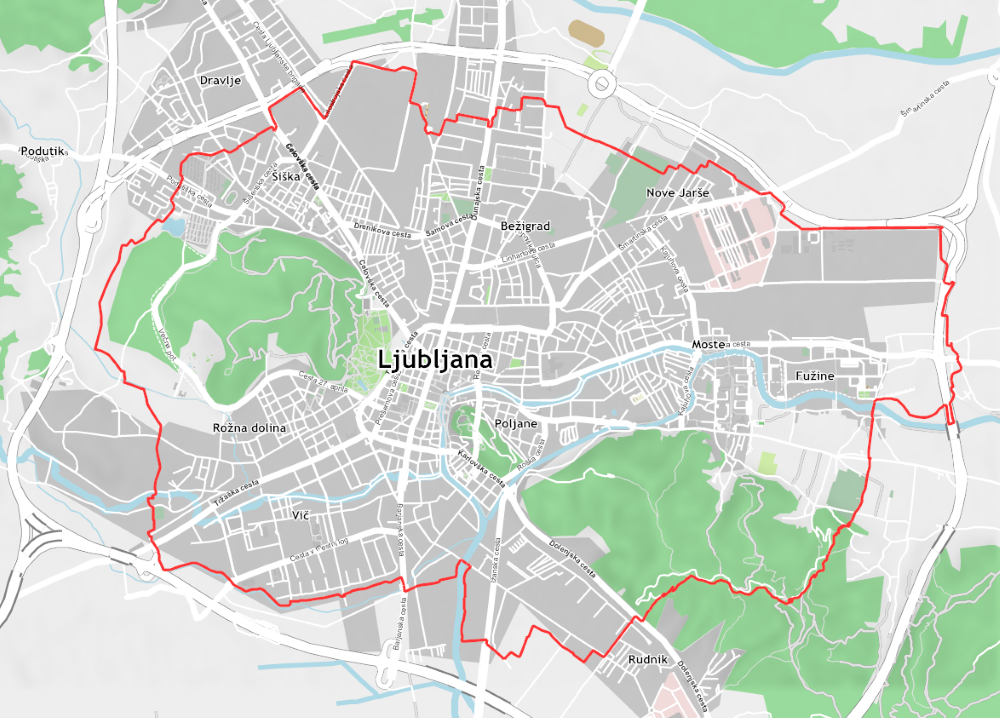
POTS. Wikimedia
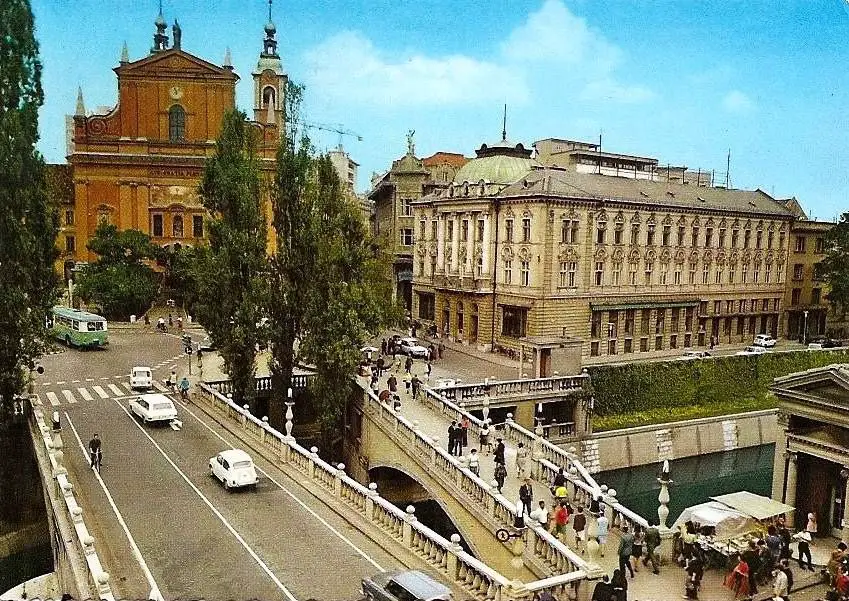
Postcard of Three Bridges, 1970s. Flickr - Démodé photos
14. The city wasn’t always pedestrianized
While the quiet streets of Ljubljana seem medieval, it’s a case of back to the future, and the pedestrianization of the city is relatively new, with many of the main squares once used as car parks, and the middle bridge of the Three Bridges being reserved for motor vehicles.
Screenshot of Google Images
15. Dragon Bridge was an experiment
The Dragon Bridge may now be one of the city’s icons, and even have its own song (see below), it was an experimental structure of unknown safety. To quote Wikipedia, “Janez Koželj, a professor of urban design, expressed in 2010 his opinion that the new technology of reinforced concrete and new static calculations were used in Ljubljana instead of Vienna, because it meant minor consequences if they had not worked.”
16. There’s no love in Ljubljana
Despite what some may say, the name of the city has nothing to do with love. Instead, it’s said to have derived from the Roman word alluviana, meaning a flooding river, while the German name for the city, Laibach, was from the name of the Laubach marshland. However, other reports indicate that Laibach is from the Roman name, Labacum.
Romantics will be pleased to hear that Slovenia is, however, still the only country with the word love in its name.
17. You can ride a bike for free
Ljubljana is one the top biking cities in Europe, and a trip downtown will quickly show that as far as the centre is concerned it’s two wheels good and four wheels bad. One way to join the fun is to make use of the Biciklj system. This is similar to other city-bike schemes, and has the high value offer of the first 60 minutes of use being free. Plan your trips, or look out for the bike stands, and you won’t have to pay a cent more than the registration fee. Learn more here
18. The streets are alive with the sound of music
During December and the summer months the centre of town fills up with free performances by musicians, actors, puppeteers and others, part of the many festivals the city puts on to attract tourists and keep locals entertained. If planning a trip, be sure to see what’s on in town (by checking, say, our weekly What’s on in Ljubljana guides).
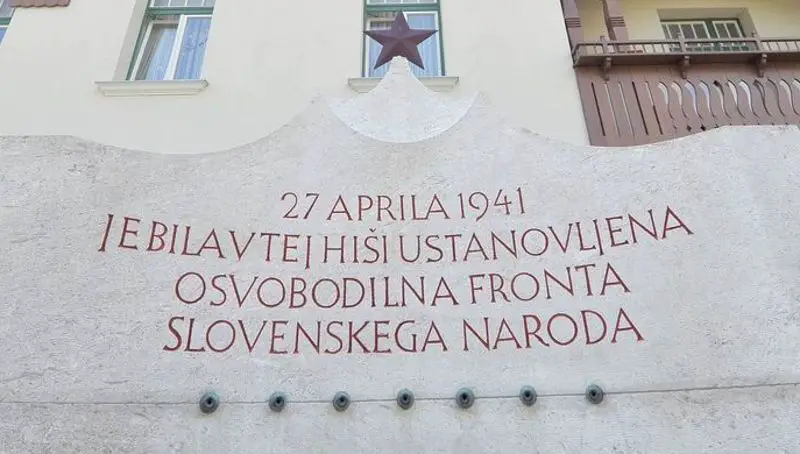
19. History has some strange turns
The villa in which Slovenian resistance against the WW2 occupation was established, Vidmarjeva vila, is now part of the German embassy complex. That nation’s flag thus flies beside a memorial which reads “In this house was established the Freedom Front of the Slovenian nation.”
The American Embassy. Photo: si.usembassy.gov
21. Good fences make good neighbours
Ljubljana is the only capital where the US and Russian embassies face each other. The former is a strikingly beautiful building, but expect to be questioned by security if you start taking pictures (hence our screenshot from Google Maps)
Screenshot from Google Maps
21. The trash cans are much bigger than they look
The city is installing more and more segregated garbage disposal units, with separate bins for organic, packaging, paper, glass and residual waste. The coolest thing: your trash goes underground, so the bins, while appearing small, never overflow. The worst: the smell when the organic unit is being emptied in high summer.
22. It has one of the world’s smallest skyscrapers
Although its name means ‘skyscraper’ in Slovene, Nebotičnik is all too easy to miss, reaching just 70 m into the air. Despite the modest size it was the tallest building in the Balkans when erected, in 1933, and remains one of the tallest in the city. Do pause to admire the design, and take a trip to the terrace to enjoy the view and a drink.
Wikimedia
23. Not a feature, a bug
The dog statues in Tivoli Park, in front of the Graphic Design Museum, have no tongues. This design feature is said to have been a simple mistake – the sculptor forgot to include them. However, there appears to be no truth in the story that the artist, Anton Dominik Fernkorn, shot himself because of this oversight.
24. An electric gentleman is there to help those with tired feet
One of the city's many green initiatives is its small fleet of Kavalir vehicles, with the name meaning 'gentleman' in Slovene. These electric wonderS have been moving people around the pedestrianised zone sicne 2008. Best of all, they're free to use. Just call +386 31 666 331 or +386 31 666 332 for a ride, with all models adapted for people with disabilities.
25. The river keeps changing its name
The river that runs through Ljubljana has seven names over its whole length, changing each time it goes underground and re-emerges, being known in different areas as the Trbuhovica, Obrh, Strežen, Rak, Pivka, Unica and Ljubljanica. Although swimming is no longer encouraged, making it clean enough to do so remains a goal of the current mayor.
You can see our guide to What’s on Ljubljana this Week here

